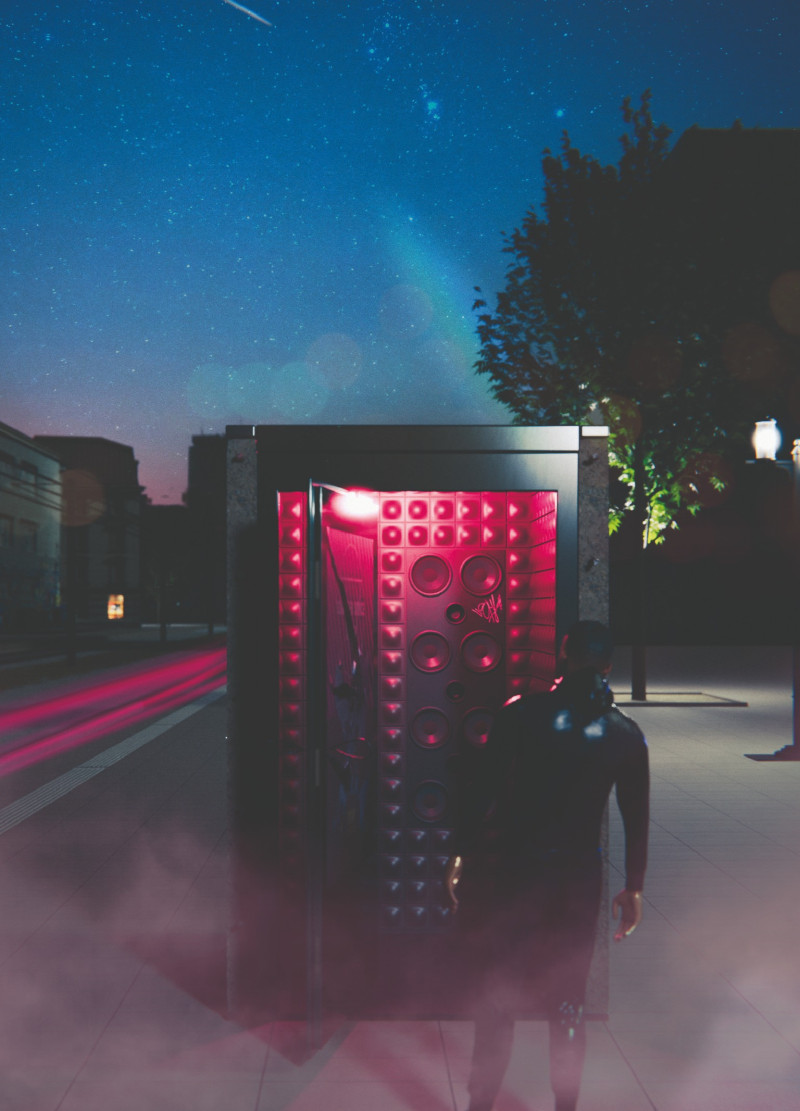5 key facts about this project
The design emerges in an urban environment focused on sustainability and innovation through the reuse of materials. Located in Berlin, it incorporates concrete panels from buildings that are no longer in use. This approach tackles environmental issues and reflects the city's cultural identity, particularly its connection to techno music. The overall concept highlights practicality, accessibility, and a relationship with the surroundings.
Material Reuse
Using concrete panels from decommissioned buildings shows the potential of material reuse in modern architecture. Sustainability is a priority, and the design captures this while creating a unique look that harmonizes with its setting. Removable lifting points function as handles for doors, making it easier for users to interact with the space.
Structural Integrity
The framework is strong, with steel panels connected through welded joints to a steel base plate. This method ensures stability while integrating various architectural features. Acoustic concerns are also addressed through recessed LED strips placed within sound insulation panels. This combination of lighting and sound management creates an inviting atmosphere. The female connections are finished with a rubber coating to minimize vibrations.
User-Centric Design
Accessibility is a major consideration in the design. The layout is planned to accommodate wheelchair users, enabling smooth navigation throughout the space. A wood frame counter makes use of existing walls, enhancing functionality. Electrical components are carefully hidden within a wood frame insert, keeping the interiors organized and tidy. These details enhance the user experience by providing a functional and cohesive environment.
Acoustic and Visual Dynamics
Sound insulation plays a critical role in this design, accomplished by using custom ceramic tiles that offer both aesthetic and acoustic benefits. Acrylic layers serve as protective barriers separating inside from outside while inviting light into the interiors. The exposed structural steel from the concrete panels also adds a layer of privacy. It helps tell the story of reused materials, merging form and practical function in a straightforward way.
Overall, the design illustrates the relationship between architecture and its urban context, creating a space that is about both the users and their environment. Thoughtful details and material choices reflect a deep understanding of local context, producing areas that engage users on multiple levels. This blend of function, accessibility, and sustainability establishes a strong presence within its lively surroundings.



















































